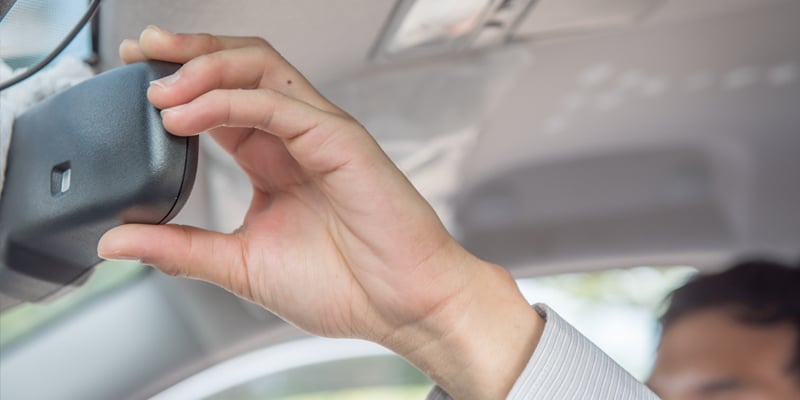
By
Rob Boyle
October 10, 2024
Updated
October 10, 2024

Why do I need to have my car inspected?
Vehicles should be inspected before use and properly maintained to ensure they are safe for use. A properly inspected car and routine maintenance can be a difference maker if a serious incident occurs while you're behind the wheel. Any defect that might affect worker safety must be corrected before using the vehicle.
When driving a vehicle for transportation during work, the vehicle itself is considered a workplace. Any defect that might affect worker safety must be corrected before using the vehicle. Always inspect your vehicle before leaving on your journey, and report all vehicle defects to your supervisor or employer.
What should I check for before vehicle inspection?
Vehicle exterior
- Check the vehicle body condition for any damage. Bumpers, fenders, and trim must be in good condition and must not be loose or significantly damaged.
- Check all doors and their locking mechanisms for easy operation. Make sure that the doors are functional and not obstructed or otherwise damaged.
- Check the direction signals/ emergency flashers for operation and for cracked or missing lenses.
- Make sure the windows and mirrors are free of ice, snow, or frost.
- Check the windshield wipers and washers to ensure they are working efficiently.
- Adjust all mirrors to fit the driver and minimize blind spots.
- Tap the horn to make sure the horn works properly.
- Check the vehicle registration tag, and make sure the vehicle license has not expired.
- Ensure the vehicle is not overloaded so you have good visual clearance in all directions.
Tires and wheels
- Look for loose or missing lug nuts.
- Look for any oil residue on the inside or outside of the wheel. This type of oil leak could indicate a bad brake cylinder or axle seal. Either condition can result in decreased brake performance that could result in an accident.
- Make sure the tires are properly inflated. Recognize that every vehicle type has different requirements for tire pressure. The manufacturer’s recommended tire pressure is listed in the owner’s manual and on the driver’s door or door pillar.
- Make sure the tire can handle the pressure required. It is not uncommon for a vehicle to be fitted with the wrong tires.
- Check the tire pressure using a high-quality tire pressure gauge.
- If your vehicle is equipped with an automatic tire pressure monitoring system, be familiar with the system and possible limitations. Some systems do not provide the actual PSI reading and only sound an alarm when the tire pressure drops below a prescribed limit.
- Make sure the tires have adequate tread depth (greater than 1/8 inch) and that the tires have no visible signs of deterioration.
- Make sure the spare is in good condition and adequately inflated.
Mirrors
When someone is about to drive, they should adjust their sideview mirrors in order to see the sides of their car. Unfortunately, this can leave a large blind spot for the driver. People usually adapt to this blind spot by physically turning their bodies around to view what is beside them, which could lead to an unwanted accident. Many do not realize how important it is to have properly adjusted mirrors.
With properly set mirrors, you should be able to see everything without moving your head. Given the differences in cars (and not to mention their heads), the only way to get mirrors perfect is to experiment, making sure that you never lose complete sight of a car passing you on either side. You can do this safely while stopped at a light as cars pulls up beside you, or you can adjust them while parked on the side of a street. In order to get a good approximation, the United Services Automobile Association (USAA) recommends drivers adhere to the following tips:
- Set the rearview mirror so that you can see straight backwards.
- Stick your head up right against the driver side window and adjust your left sideview mirror so that you can just begin to see the left side of your car.
- Lean your head toward the middle of the car, between the driver and front passenger seat, and adjust your right mirror until you can just see the right side of the car.
How do I know if my mirrors are properly adjusted?
When you are in a normal driving position, you won’t be able to see your own car in your sideview mirrors. You’ll probably find driving like this disconcerting at first because all you can see on the side mirrors is the side of the road rushing by with no visual reference to let you know exactly where you’re looking.
In fact, you won’t be able to see anything in your sideview mirrors that you can see in your rearview but note that your side mirrors now capture a tremendous amount of information about what is in the lanes right next to your car.
If they are adjusted correctly, each mirror handles a certain angle of view behind you so that everything is covered, with no blind spot big enough for a car.
When changing lanes, you should be able to check your rearview, and then glance to the appropriate sideview to make sure it’s not filled with car. If you just see a blur of road rushing by, you’re clear. Please remember to drive safely and always buckle up!

